Are you a feline guardian who likes to spruce up your dwelling with houseplants? If so, you might be familiar with the ZZ plant – a beautiful and low-maintenance alternative that’s widespread in households across the globe.
But, are ZZ plants toxic to cats?
Yes, ZZ plants are toxic to cats, and it can cause many adverse affects on them. That’s why as a conscientious pet parent, it’s vital to be informed about how ZZ plants are poisonous to cats.
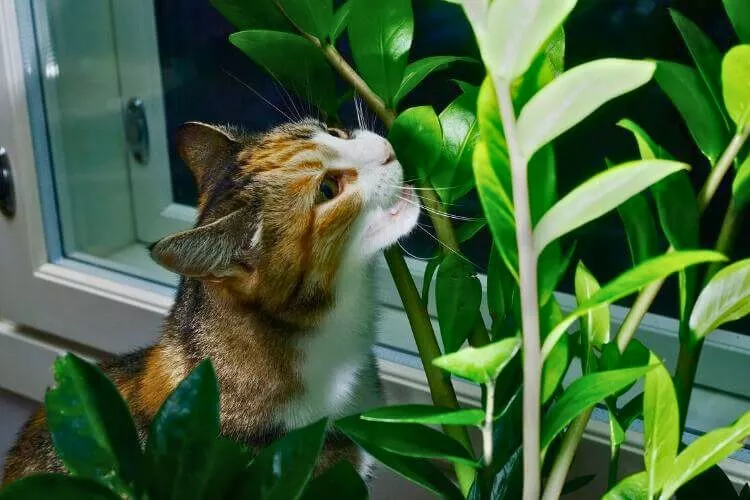
This piece will provide a short synopsis of ZZ plants, elucidate why it’s significant to grasp their toxicity to cats and furnish you with the insights you require to keep your beloved pet secure.
Whether you’re a seasoned cat caretaker or an aspiring horticulturist, this comprehensive guide will endow you with the knowledge to guarantee your cat’s robustness and happiness in your abode.
Table of Contents
Understanding ZZ Plant
The ZZ plant has gained a following among enthusiasts due to its visually stunning presence and fuss-free demeanor.
In this section, we’ll examine the diverse elements of this exceptional plant, illuminating why it has become a preferred option for many. Let’s embark on a journey to comprehend the ZZ plant.
Botanical name and description
The ZZ plant, scientifically known as Zamioculcas zamiifolia, belongs to the Araceae family. Originating from Eastern Africa, it has adapted well to various environments, making it a versatile and hardy houseplant.
The ZZ plant boasts dark green, glossy leaves arranged in a unique, feather-like pattern along its thick, succulent stems. These stems grow vertically, reaching an average height of 2 to 3 feet and can be easily propagated through division, leaf cuttings, or rhizome separation.
Characteristics of ZZ plants
The ZZ plant is notable for its eye-catching, gracefully arching foliage that sprouts on strong, vertical stems. Its fuss-free nature and adaptability to a wide range of lighting conditions make it a perfect choice for plant enthusiasts at any level of experience.
The ZZ plant is tolerant of dry conditions, necessitating only occasional watering, typically bi-weekly or tri-weekly, and favors soil with good drainage. While the plant can grow in dimly lit areas, it exhibits more vivid hues when situated in well-lit, indirect sunlight.
Common uses of ZZ plant in homes and offices
The ZZ plant’s durability and adaptability make it a favored choice for domestic and business environments. The plant’s ability to flourish in low-light settings makes it a perfect fit for office spaces, where access to natural light might be scarce.
Furthermore, the ZZ plant’s air-cleansing properties contribute to improved indoor air quality by eliminating harmful substances like benzene, toluene, and xylene.
Within homes, the ZZ plant is frequently employed as a decorative feature in living rooms, bedrooms, and corridors, infusing the space with a hint of verdant foliage and a sense of serenity.
Popular varieties of ZZ plant
While the standard ZZ plant is a popular choice for many, several varieties offer unique characteristics:
- Zamioculcas zamiifolia ‘Raven’: The ‘Raven’ variety boasts dark purple-black leaves that transition to a rich green as they mature, strikingly contrasting the more common green-leaved version.
- Zamioculcas zamiifolia ‘Zenzi’: The ‘Zenzi’ variety is characterized by its compact growth habit and curled, slightly smaller leaves, making it an excellent choice for smaller spaces or tabletop displays.
- Zamioculcas zamiifolia ‘Variegata’: The ‘Variegata’ variety features green and yellow variegated leaves, adding a touch of color and visual interest to any space.
Are ZZ Plants Toxic to Cats?
Yes, ZZ Plants are toxic to cats. In fact, almost all parts of the plant, including the leaves, stems, and roots, contain calcium oxalate crystals can cause irritation and swelling in the mouth, tongue, and throat if ingested by cats. In severe cases, ZZ Plant toxicity can even lead to difficulty breathing, vomiting, and even death.
In this extensive segment, we will investigate the indicators of ZZ plant poisoning in cats, the assortment of toxins contained in the plant, the influence of these toxins on our feline companions, and the diverse intensities of toxicity.
Symptoms of ZZ plant poisoning in cats
If a cat consumes portions of a ZZ plant, it might exhibit various signs that could suggest poisoning. The symptoms include:
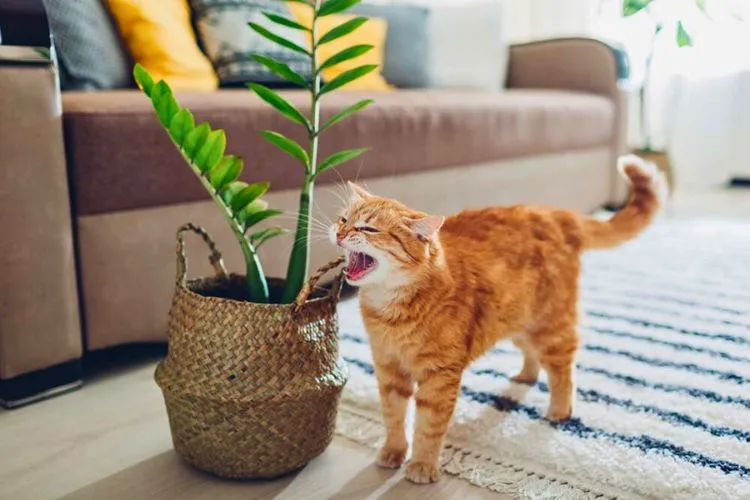
Vomiting
One of the primary symptoms of ZZ plant poisoning in cats is vomiting. When a cat consumes a portion of the plant, it may regurgitate the ingested material and stomach contents, often within a few hours of consumption. This is the body’s way of attempting to expel the toxic substance.
Diarrhea
Diarrhea is another symptom that may manifest in cats after ingesting parts of a ZZ plant. The toxins present in the plant can irritate the gastrointestinal tract, leading to loose, watery stools. Frequent diarrhea can result in dehydration if not addressed promptly.
Drooling
Excess drooling, and hypersalivation, might transpire in cats that have ingested parts of a ZZ plant. The toxins in the plant can provoke irritation and swelling in the mouth and throat, resulting in increased secretion of saliva.
Lack of appetite
A decrease in appetite is another potential symptom of ZZ plant poisoning in cats. Due to the discomfort and irritation caused by the toxins, a cat may be reluctant to eat, which can lead to weight loss and malnutrition if not addressed.
Lethargy
A cat exposed to ZZ plant poisoning might display lethargy, diminished energy levels, and a general lack of enthusiasm in participating in routine activities.
This could be due to the toxins impacting the cat’s body and inducing uneasiness, making it challenging to sustain its typical activity levels.
Types of ZZ plant toxins
The primary toxins present in ZZ plants are calcium oxalate crystals, which are microscopic and needle-like. These crystals can cause mechanical irritation to the tissues they come into contact with, leading to the symptoms described above.
How ZZ plant toxins affect cats
After consuming ZZ plant portions, the calcium oxalate crystals may induce irritation and inflammation within the cat’s mouth, throat, and digestive system.
This irritation can give rise to various poisoning symptoms as the feline’s body endeavors to eliminate the harmful substance.
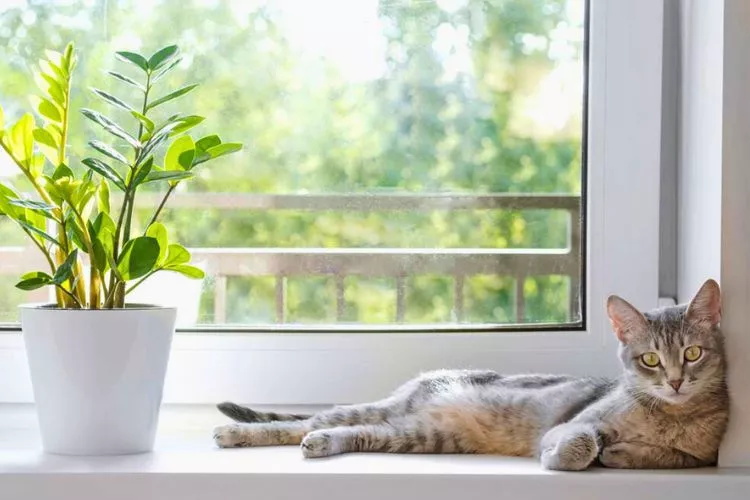
The severity of ZZ plant toxicity in cats
The intensity of ZZ plant toxicity in cats may fluctuate based on the quantity consumed and the specific cat’s susceptibility to the toxins. Poisoning can be categorized as mild, moderate, or severe.
Mild poisoning
Mild poisoning might transpire when a cat consumes a minimal quantity of the ZZ plant. The feline may undergo minor symptoms like hypersalivation or slight uneasiness in such instances. With timely action, the cat is expected to recuperate without enduring any lasting consequences.
Moderate poisoning
In situations involving moderate poisoning, a cat could have ingested a more substantial part of the plant, resulting in more pronounced symptoms like vomiting and diarrhea. Urgent veterinary attention is required to tackle the symptoms, offer supportive care, and guarantee the cat’s recovery.
Severe poisoning
Severe poisoning may arise if a cat consumes a considerable portion of the ZZ plant or exhibits increased sensitivity to the toxins. Severe poisoning symptoms can include extreme lethargy, labored breathing, and even collapse.
In such cases, immediate emergency veterinary assistance is crucial, as the cat might necessitate hospitalization, intravenous fluid administration, and supplementary supportive measures to counterbalance the toxins and foster healing.
Preventing ZZ Plant Poisoning in Cats
In our journey to understand the ZZ plant and its potential impact on our feline companions, we must now discuss how to prevent ZZ plant poisoning in cats.
In this section, we will cover practical tips to keep cats away from these plants, explore alternative plants that are safe for cats, and outline the steps to take if your cat ingests a ZZ plant.
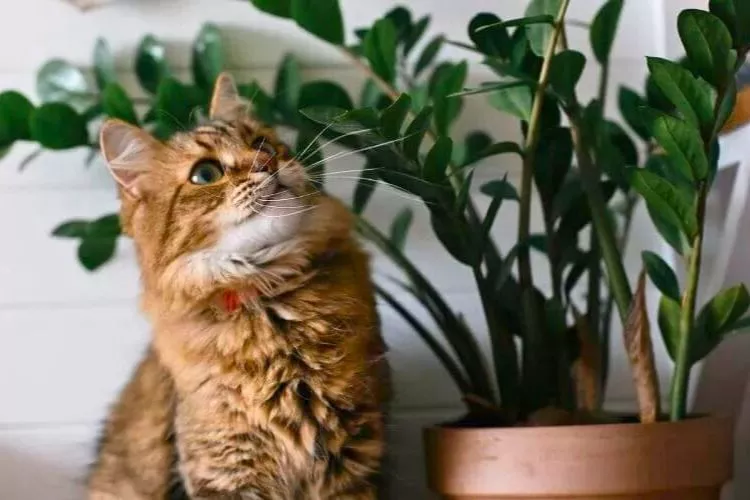
Tips for keeping cats away from ZZ plants
Keep ZZ plants out of reach
An easy way to ensure your cat doesn’t come into contact with ZZ plants is by positioning them out of their reach. Put the plants on elevated surfaces or in areas your cat can’t access. Be aware of your cat’s ability to climb and ensure the plants are placed securely.
Use deterrents
Certain smells or textures often repel cats. You can use natural deterrents like citrus peels or diluted essential oils like lemon or eucalyptus to keep your cat away from the plant. Alternatively, you can use commercially available pet deterrent sprays or mats with an uncomfortable texture to discourage your cat from approaching the plant.
Train your cat
Training your cat to avoid certain areas or items can effectively keep them away from ZZ plants. Using positive reinforcement, such as treats or praise, when your cat stays away from the plant can help them learn to associate staying away with rewards. Consistency and patience are key when training your cat.
Alternative plants that are safe for cats
Spider plant
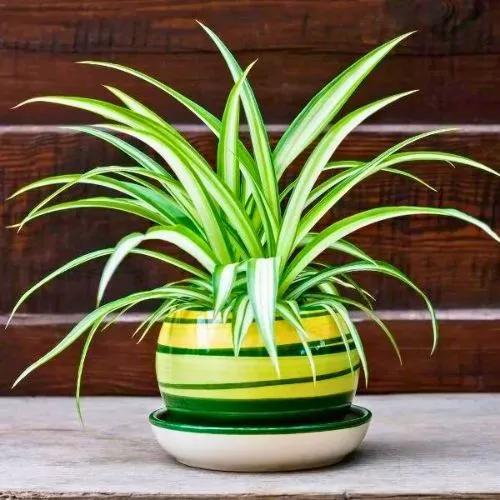
Spider plants serve as an excellent non-toxic substitute for ZZ plants.
They are simple to maintain, adapt effortlessly to diverse lighting conditions, and can even assist in purifying the air.
Furthermore, their elongated, curving leaves make them a visually appealing enhancement to any space.
Bamboo palm
Bamboo palms, sometimes called parlor palms, are cat-friendly and can infuse your home with a tropical vibe.
These plants are relatively easy to care for, enjoying indirect sunlight and regular watering.
Additionally, they possess air-purifying qualities, contributing to a healthier living environment.
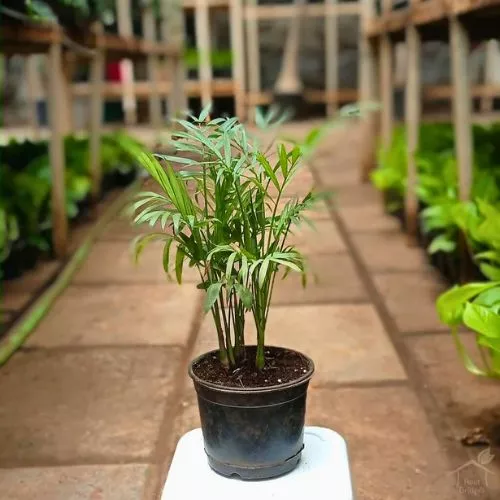
African violet
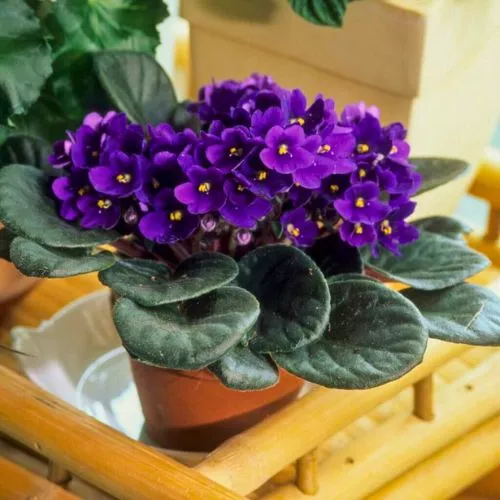
African violets, which are non-toxic to cats, are ideal for incorporating a burst of color into your home.
These flowering plants are available in various purple, pink, and white hues and prosper in bright, indirect light.
With the right care, African violets can produce blossoms several times yearly.
Christmas cactus
The Christmas cactus presents a safe alternative for households with cats.
Unlike other cacti varieties, it lacks sharp spines, and its vibrant flowers make it an eye-catching option.
Christmas cacti prefer bright, indirect light, and they can thrive for an extended period with proper care.
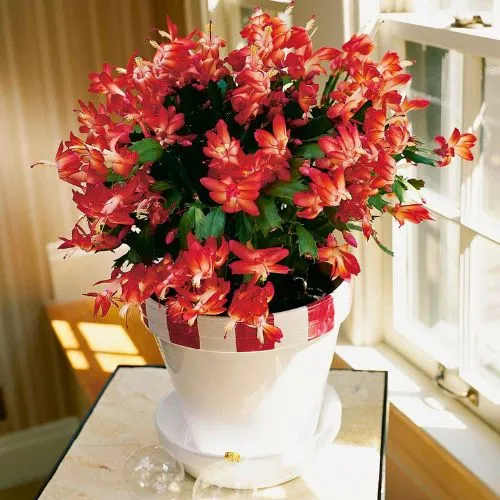
Steps to take if your cat ingests ZZ plant
Remove ZZ plant from the area
If you suspect your cat has ingested any part of a ZZ plant, remove the plant from their immediate vicinity to prevent further consumption. This will minimize the risk of additional exposure to the toxins.
Contact your veterinarian
Once you have removed the plant, contact your veterinarian immediately. They can advise you on the appropriate steps to take based on your cat’s specific situation and may recommend bringing your cat in for a check-up or treatment.
Observe your cat’s behavior
Keep a close eye on your cat’s behavior for indications of poisoning, such as hypersalivation, vomiting, diarrhea, or listlessness. Record any symptoms you notice, as this data will be useful for your veterinarian in evaluating your cat’s health and deciding the most appropriate response.
Provide supportive care
While awaiting veterinary guidance or treatment, offer supportive care for your cat. Ensure they have access to clean water to ward off dehydration and place them in a peaceful, cozy area where you can continue observing their behavior.
It is crucial to stay calm and offer comfort, as your cat might be experiencing distress due to the discomfort resulting from the poisoning.
Frequently Asked Questions (FAQs)
What are the symptoms of ZZ plant poisoning in cats?
Symptoms of ZZ plant poisoning in felines include drooling, vomiting, diarrhea, reduced appetite, and lethargy caused by ingesting the plant’s calcium oxalate crystals.
Are there any safe plants that I can keep around my cat?
Yes, safe cat plants include spider plants, bamboo palms, African violets, and Christmas cacti, which pose no toxicity risk to feline companions.
What other household plants are toxic to cats?
Other toxic household plants for cats include lilies, aloe vera, English ivy, and pothos, all of which can cause varying degrees of harm if cats ingest them.
Conclusion:
In conclusion, ZZ plants can be toxic to cats, causing symptoms like drooling, vomiting, and lethargy. Choose non-toxic alternatives such as spider plants or bamboo palms to keep your feline safe.
If you suspect poisoning, contact your veterinarian and provide supportive care. We hope this guide has been helpful. Explore similar topics on our website and check back soon for more valuable information.


